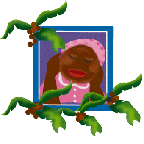Located about 65 kilometers off the Northern Coast of Honduras, the Bay Islands group consists of 3 main Islands (Roatán, Guanaja, and Utila), 3 smaller islands (Barbareta, Morat, and Helene), and 65 smaller cays. Between these islands and the mainland are the Cayos Cocinos (Hog Islands). This is a very brief history of Roatan Honduras.
During the Maya reign in Central America (between the 4th and 10th centuries), the Paya Indians populated the Bay Islands. The Payas were a smaller and less advanced group than the Mayans. Their civilization was characterized by simpler housing and tools. Payan artifacts (pottery, jade, and shells) are often found in Island burial and ceremonial sites and are referred to by the locals as "yaba ding dings."
The island Indians mined jade which they took in small boats to the mainland to trade for tools, and other items. The islands provided an abundant variety of foodstuffs such as manioc, fish, corn, turtles, iguanas, agouti (island "rabbits"), native fruits, land crabs, and deer.
During the 13th and 14th centuries, Europeans discovered these islands. For almost 200 years Spanish conquistadores and British pirates battled for control of these islands, ignoring the Indians for the most part. During this period, the Islands were used for food and wood supplies, safe harbor, and slave trading. Remains of old British forts and towns named after famous pirates remain as their legacy. One group of slaves was "parked" here during this time during the heat of a battle. When the winners came to collect them, the slaves refused to go. These are the Garifunas who populate much of the Bay Islands to this date, still maintaining their own cultural identity and language. Punta Gorda on Roatán is one of many villages where they still make their homes.
The British eventually established control of the Bay Islands, until the early 1960's when control of the Islands was officially returned to Honduras.
Today...
The Islands have evolved into a microcosm of many cultures that is not easy to describe. In recent years, the number of North Americans and Europeans living in the Bay Islands, especially on Roatán, has grown dramatically. They have brought many changes, some good and some not so good. Once pristine beaches and verdant hillsides are now sites for homes, restaurants, resorts, and other developments. As this new development occurs, fresh water supplies are being strained, and the need for a modern infrastructure is apparent. RECO (Roatán Electric Cooperative) provides adequate electricity, but no sewage or water treatment plants exist. Telephones are difficult or impossible to get in most places. Ironically, cable television is widely available.
Created in response to the ecological risks facing the Islands, The Bay Islands Conservation Association (BICA) "is striving to establish a strong sense of awareness ... of the importance of conserving and protecting the islands' natural resources." [Cheryl Galindo, Introduction to "The Bay Islands: People and Nature"]
